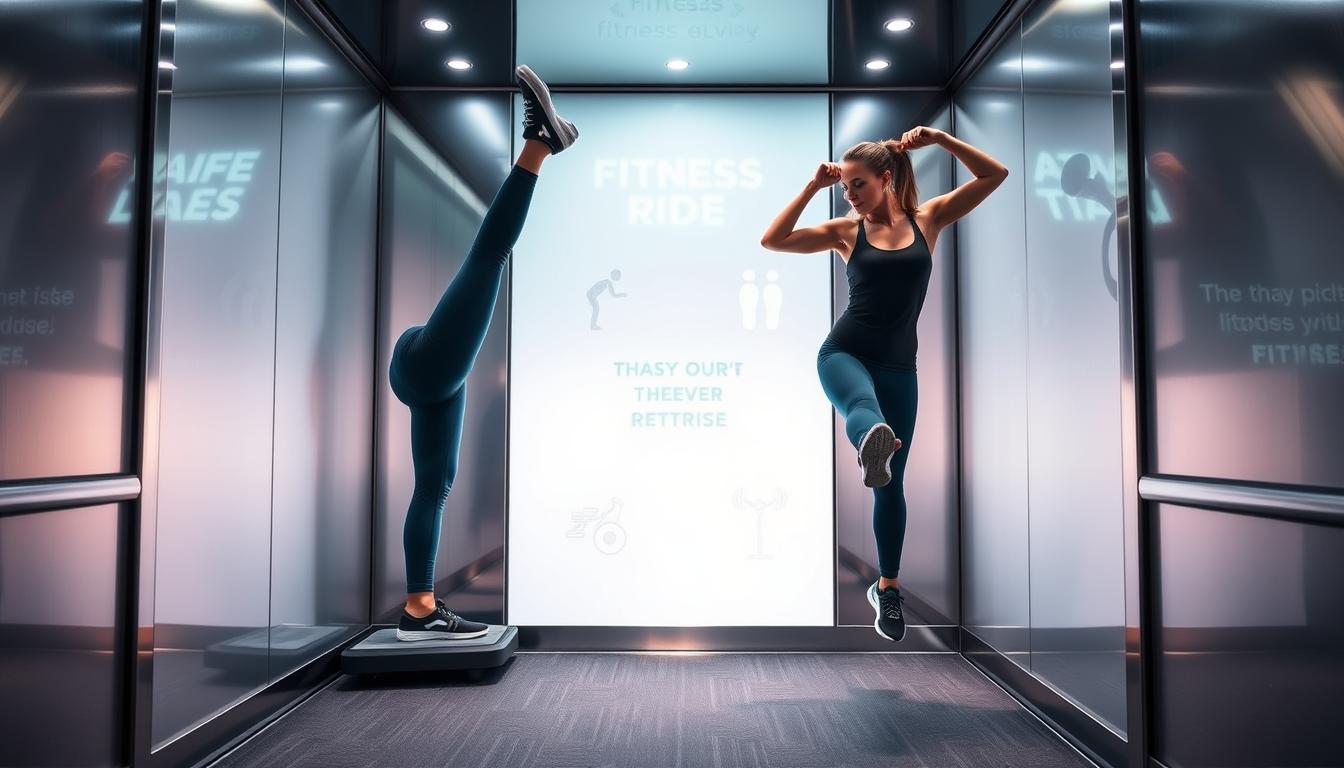Today, building muscles is vital for better fitness and strength. It helps not just athletes, but anyone doing daily tasks like lifting things. Since our bodies are nearly half muscle, targeting these with specific exercises can boost our abilities.
Compound exercises are at the core of gaining strength. They involve many muscles at once, like when doing squats or bench presses. These exercises make muscles bigger and improve movement and balance. Adding them to your workout routine is smart for building strength.
To really change your workout and hit your fitness goals, understanding key techniques matters. This piece dives into what muscle-building workouts are all about, why compound moves are crucial, and how to set a plan that fits you.
Introduction to Muscle-Building Workouts
Muscle-building workouts are key to getting stronger and improving your fitness. They focus on building more muscle with special resistance exercises. These workouts often mix different exercises, like compound and isolation movements. This helps work out various muscle groups effectively.
A good strength program works on all key muscle areas: legs, chest, back, shoulders, and arms. To grow muscles, it’s important to keep challenging them by increasing the workout’s difficulty. Also, doing exercises like deadlifts, squats, and bench presses correctly is crucial. This helps avoid injuries and get the best results.
For those just starting, there are specific exercises to kick off your strength journey. Dumbbell incline rows, goblet squats, and deadlifts are great examples. Beginners could try a three-day split routine, focusing on legs, pushing, and pulling movements, with rest days in between.
At times, progress might slow down. To push past this, try mixing up your routine or adding more weight. Eating right and resting well are also key for building muscle. Staying consistent, keeping track of your workouts, and making sure you rest enough are crucial for long-term success in getting stronger.
Understanding Compound Exercises
Compound exercises are key for building muscle effectively. They work many muscle groups at once, helping you get stronger and build muscle faster. You’ll often do squats, deadlifts, and bench presses. These target muscles like your quads, glutes, chest, and back.
A study in the Journal of Strength & Conditioning Research shows that compound exercises boost muscle growth by creating tension, causing muscle damage, and inducing metabolic stress. They make workouts faster and more effective. According to Sports Medicine, these exercises allow you to lift heavier weights, increasing your strength.
Research in Frontiers says compound exercises raise your heart rate, giving you cardio benefits. They’re better than isolation exercises in this way. The European Journal of Applied Physiology found they can also increase testosterone, helping muscle growth. Adding exercises like pull-ups, lunges, shoulder presses, and bent-over rows to your routine can improve your movement, stability, and endurance.
Start adding compound exercises to every workout for the best results. Beginners can try bodyweight moves and adjust as they get stronger. Avoid moving too fast, forgetting proper form, or not mixing up your exercises. Using compound movements is a great way to build muscle effectively.
What Are the Benefits of Compound Exercises?
Compound exercises offer many benefits, including muscle growth and better fitness. They save time by working out multiple muscle groups at once. This way, you get the most from your workout in a shorter time. It’s great for those with busy lives who still want to stay fit.
Exercises like squats, deadlifts, and push-ups help burn extra calories. They do this by using big muscle groups, which needs more oxygen. This not only helps in losing fat but also in building more muscle. Compared to doing just one muscle at a time, these exercises give better results in muscle growth.
They also make muscles work better together, improving how you move. When you do compound exercises, your body learns to coordinate its muscles better. This makes you perform better in physical activities.
Doing these exercises increases your heart rate, which is good for your heart and muscles. You get both stronger muscles and a healthier heart. They also make your joints more flexible, helping you move better and be more athletic.
Creating Effective Muscle-Building Workouts for Strength in the Elevator
To build strength effectively, you need a plan. Choose exercises that work big muscle groups both together and separately. Make sure you’re smart about how you spend your workout time.
Include different types of exercises:
- Compound exercises like squats and bench presses for maximum strength gains.
- Isolation exercises such as curls and tricep extensions to balance muscle development.
Use the 6-12-25 method to get your muscles working hard. This three-part system involves:
- 6 reps of heavy compound moves
- 12 reps with lighter weights
- 25 reps for building stamina
For chest muscles, start with Bench Press at 6 reps, then Incline Dumbbell Press at 12 reps, and end with Face Pulls at 25 reps. For your legs, mix Back Squats, Romanian Deadlifts, and Goblet Cyclist Squats using the same counts.
Keep your breaks short—10 seconds between exercises and 3 minutes between sets. This keeps the workout intense. It helps you get stronger and build endurance without wasting time.
Always focus on doing exercises correctly to avoid hurting yourself. A good set of 12-15 reps is often enough for muscle growth. Resting a day between sessions helps your muscles heal and get stronger. A well-planned workout in an elevator setting helps you gain strength efficiently.
Exploring the 6-12-25 Protocol for Muscle Building
The 6-12-25 protocol is a unique workout method aimed at increasing muscle size. It starts with using heavy weights for six reps. Then, you switch to moderate weights for twelve reps. Eventually, you end with lighter weights for twenty-five reps. You do these sets one after the other with little rest. This way, your muscles experience different types of stress, helping them grow.
How the 6-12-25 Protocol Works
This system works by targeting different muscle fibers. The first six reps focus on strength, hitting type II muscle fibers hard. Next, twelve reps work on making muscles bigger. The last twenty-five reps boost your endurance and improve blood flow. By doing this, you address three important growth factors—mechanical tension, muscle damage, and metabolic stress—without always lifting the heaviest weights.
Benefits of the 6-12-25 Protocol
The 6-12-25 protocol offers a lot of benefits for building muscles. Key benefits include:
- Enhanced Hypertrophy: The mix of rep ranges promotes muscle growth well.
- Increased Strength: Starting with heavy weights helps to increase strength.
- Improved Muscular Endurance: The high rep set (25 reps) boosts your endurance and overall muscle condition.
- Time Efficiency: This method shortens workout times but still maximizes muscle development.
- Injury Prevention: Changing the stress on muscles lowers the risk of injury from overuse.
Exercises like incline dumbbell presses or seated cable rows fit well with the 6-12-25 protocol. By adjusting weights and gradually doing more reps, you get a complete muscle workout. This meets a variety of fitness goals and levels.
Top Compound Exercises for Maximum Gains
Adding compound exercises to your routine boosts muscle gains and strength. These exercises work many muscle groups at the same time. This makes your workouts more effective. Let’s look at two key compound exercises every training program needs.
The Importance of Squats in Your Routine
Squats are crucial for building muscle. They work the quads, hamstrings, glutes, and core. This improves lower body strength. Doing squats correctly is important. Keep a straight back and tight core to perform well and avoid injuries. Squats come in different forms, like back, front, and goblet squats. This makes them great for anyone’s workout plan.
Bench Press Techniques and Benefits
The bench press is a top exercise for the upper body. It mainly works the chest, shoulders, and triceps. Using the right body position and grip is key. It ensures you move through the exercise’s full range. A good bench press strengthens key muscles and increases upper body size. It’s a powerful way to build muscle.
The Role of Progressive Overload in Muscle-Building
Progressive overload is a key concept in building muscle. It’s essential for muscle growth and getting stronger. By slowly adding more weight, doing more reps, or increasing the intensity, you challenge your muscles. This leads to better muscle growth. Knowing how to do this can make your workouts much more effective.
Understanding Mechanisms of Muscle Growth
Muscle growth mainly comes from progressive overload. This means making workouts harder over time. You can do this in several ways:
- Adding weight: For example, try to increase weights by about 5% every four weeks.
- Increasing repetitions: Slowly add one more rep each week to challenge yourself.
- Decreasing rest periods: Taking shorter breaks makes your workouts tougher.
When using progressive overload, it’s important to be careful to avoid injuries. Don’t increase intensity by more than 10% a week. This helps you keep growing muscles without hitting a plateau. Here are some ways to make things harder:
- Lifting heavier weights: Use the two-for-two rule; if you can do two more reps than usual in the last two sessions, up the weight.
- Increasing time under tension: Take three seconds to lower weights to boost muscle tension time.
- Leveling up exercise difficulty: Move from easy exercises to harder ones, like from standard push-ups to archer push-ups.
- Increasing work volume: Try drop sets. After finishing your sets, cut the weight in half and do more reps.
Using these methods helps you keep advancing in your strength training. Focusing on progressive overload helps you keep getting stronger and building muscle. This is crucial for those committed to their fitness goals.
Common Mistakes in Muscle-Building Workouts
Understanding common workout errors is key to better muscle growth. Many folks don’t realize the mistakes that slow their progress. For example, not warming up can lead to more injuries. Just a quick 5 to 10-minute walk or light aerobic activity can get the body ready.
Rushing exercises is risky, too. Moving too fast can cause bad form and injuries. It’s important to perform movements correctly and rest for about a minute between them.
Overtraining is a frequent mistake that can mess up fitness plans. Usually, doing one set of exercises until tired works well for most. More sets might cause injuries from overusing muscles, stopping effective workouts.
Ignoring pain while exercising is a big no-no. If it hurts, stop and try again later with lighter weights. This keeps the body safe and adapts to training demands.
Wearing the wrong shoes can cause problems too. The right shoes with support reduce the risk of hurting your feet or slipping. Also, focusing only on the pump isn’t the best strategy. Aim for intense sessions and push for reps that are nearly too hard to complete.
Adding too many sets or reps at workout’s end is a mistake. Instead, drop sets can bump up intensity without overdoing it. Sticking to just one way of doing reps isn’t great either. Mixing in some sets with fewer reps can help lift heavier, building more strength.
Thinking the longer you stay in the gym, the better, is wrong. Focusing on how intense the exercises are offers better results. Skipping cardio can impact overall health too. Doing steady cardio helps keep the heart healthy and supports muscle growth.
Only doing partial movements can limit muscle gains. Using a full range of motion and slowing down can improve joint health and muscle growth.
Tips for Enhancing Your Muscle-Building Routine
To boost muscle building, follow key workout tips. Make sure to eat enough protein, aiming for 1 gram per pound of body weight daily. It helps with muscle repair and growth. Also, increase your calories to gain about 1 pound each week.
Compound exercises like squats, deadlifts, and bench presses are essential. They work big muscle groups, helping you build muscle faster. When lifting, use heavier weights for fewer reps (3-5) to grow stronger and bigger muscles.
Get ready to work out by having a shake with 6g of amino acids and 35g of carbs before you lift. Keep your intense workouts to three times a week. This avoids overtraining and lets your body recover.
After working out, eat some carbs to help your muscles recover. Keep challenging your muscles by slowly adding more weight, doing more reps, or increasing intensity. This is called progressive overload.
Control your movements, especially when lowering weights, to work your muscles harder. Sleeping for at least 6 hours is crucial for recovery and growth. Eat a balanced diet with quality carbs, fruits, and veggies to power your training.
Keep a record of your workouts to see your improvement. Working with a trainer or a buddy can keep you motivated. Train 3-5 days a week consistently and always focus on doing exercises correctly to avoid injuries.
Try a healthy pre-workout drink: mix 1 scoop of whey protein, 1 tsp of oil, 1/2 cup of yogurt, and juice. Using these tactics will surely boost your workout and muscle growth.

Conclusion
Muscle-building workouts are key to real fitness results. They mean using smart tactics like compound exercises. This includes exercises that work many muscles at once, such as squats and deadlifts. This approach helps grow muscles effectively.
Adding techniques like supersets and drop sets can save time yet still grow muscles. Good form and progressive overload are crucial. They help muscles grow safely and steadily.
It’s important to stay focused and informed about your workouts. Following a detailed plan, eating right, and resting enough will help you succeed. Use these tips to boost your strength and achieve your fitness goals.



